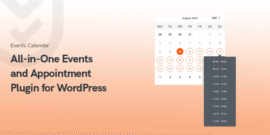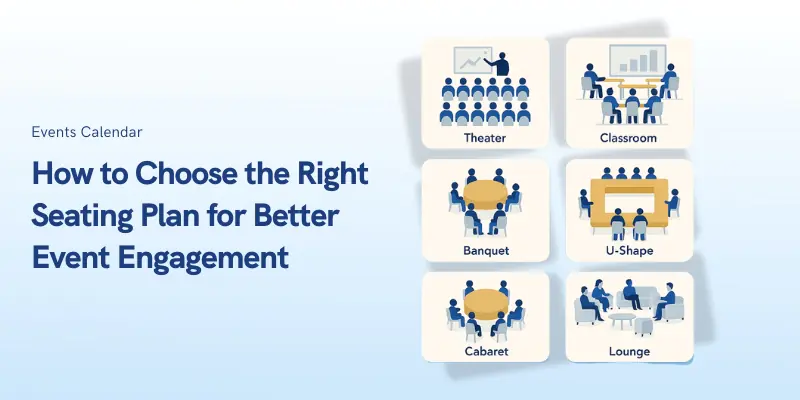
How to Choose the Right Seating Plan for Better Event Engagement
Introduction: Why Event Seating Arrangements Matters More Than You Think
Event organizers are often concerned with venue, speakers, catering and entertainment for their events. However, there is one critical event that is mostly overlooked but can have a massive impact on how attendees experience the event.
We are talking about seating. The way attendees are seated in the venue influences their interactions, engagement with the content, and perception of the event.
[Event Success Tip]: If boosting engagement is your goal, optimizing every attendee touchpoint is key. Explore 5 Smart Strategies to Engage Attendees After Your Event to maintain connection and momentum long after the seating plan ends.
If the seating area is thoughtfully planned, communication and networking between attendees improves. By contrast, a poorly chosen layout leads to discomfort and disengagement.
Based on studies, seating arrangements affect emotional connections, and the more one moves towards the back, the less likely they are to participate.
A Harvard Business Review study underlines this with evidence that group seating can significantly influence motivation, engagement, and team cohesion in face-to-face settings.
Event Seating Arrangements Styles
In this guide we are going to explore six effective seating arrangements, their best use cases, pros, cons, and engagement tips, along with how the Modern Events Calendar (MEC) can streamline your seating strategy.
Theater Style Seating
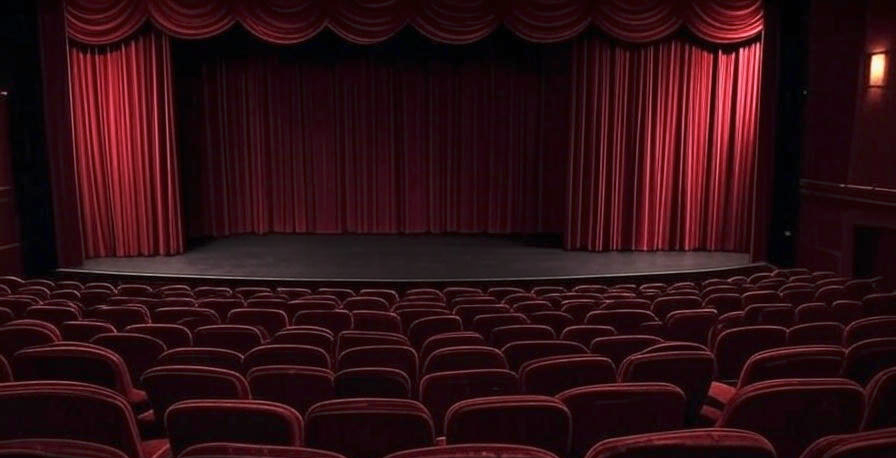
If the event needs to focus on a single presenter, such as a keynote speech or a lecture, then the theater style (rows of seats facing a stage) is the way to go.
This is a good format for maximizing venue capacity and accommodating large audiences. Staggered rows and aisles can ensure clear sightlines.
One limitation of this style is that attendee interactions are reduced because the stage is the focus.
Having break zones or networking areas nearby ensures post session discussions and can provide the space for Q&A. Include floor microphones or cameras to involve attendees that are not present at the venue.
Modern Events Calendar provides you with statistics that you can track to see what is working and what is not popular.
It’s also ideal for larger conferences—especially when you create your event website with WordPress to manage seating, speaker sessions, and ticketing from one place.
Classroom Style Seating

Classroom style seating is when rows of tables and chairs are arranged in a way that they face the presenter. It is common to see the seats in a chevron pattern that ensures better visibility.
This style is ideal for educational sessions or workshops that require attendees to take notes or use material.
Classroom style seating provides a structured and professional environment that has amenities, such as power outlets, making longer sessions more comfortable.
But this style limits conversation because the attendees are facing the front, not each other. Having peer-to-peer exercises or group discussions during frequent breaks can improve engagement.
Assigning ticket types to each seating zone, such as VIP or Sponsor area is a feature provided in Modern Events Calendar and its Seat addon. This way attendees can be categorized easily.
Round Tables / Banquet Style
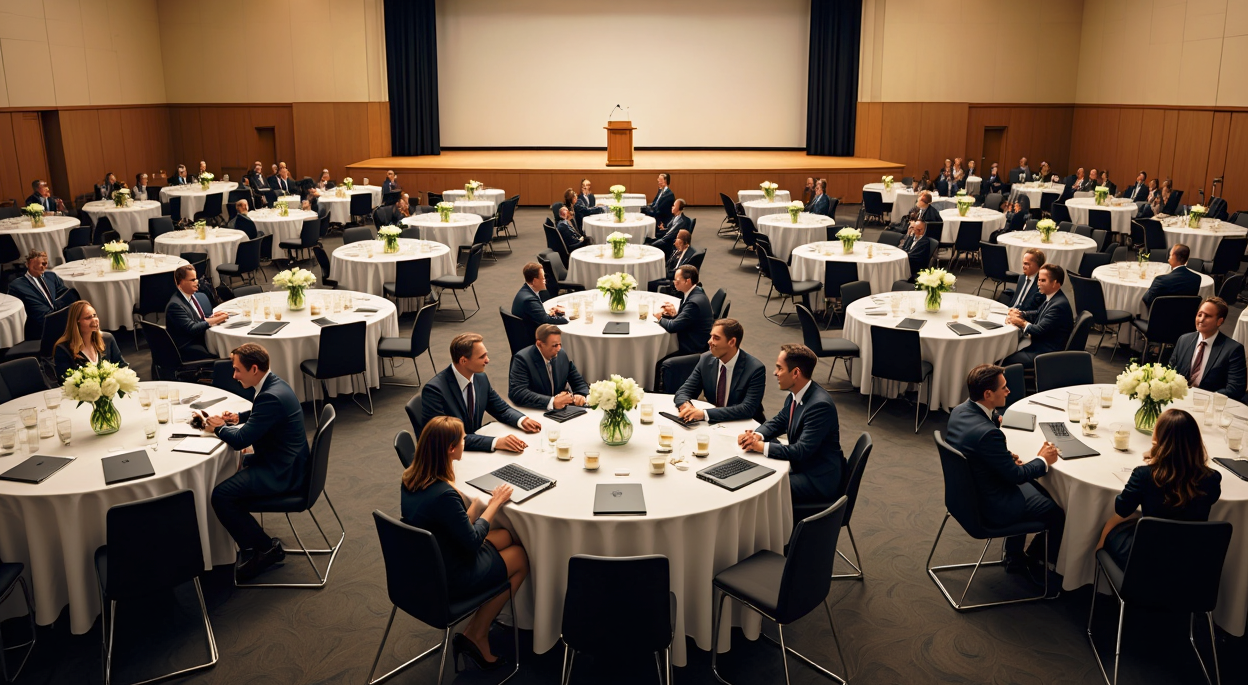
When attendee groups of 8 to 10 are arranged around round tables, facing each other and having conversation, we call this the Banquet style of seating.
Award ceremonies, networking dinners, and team-building workshops can benefit from this style. This is a particularly useful plan when food is involved.
[Event Planning Tip:] If you’re looking to streamline event setup and seating through a centralized platform, don’t miss Top 9 Event Management Software to Streamline Your Events—a roundup of tools that help make planning smoother.
Additionally, the tables can be arranged in a herringbone pattern to make a potential stage more visible.
As one can guess, this setup requires a spacious venue and is rather casual so formal events might shy away from it.
When talking about a round table, inevitably, some attendees are going to be facing away from the presenter.
To overcome these limitations, rotate the table participants between sessions to ensure everybody gets to be with everybody.
With Modern Events Calendar you can have a clear map of the seating area and then mix that to ensure people make the most of the event.
U-Shape Seating
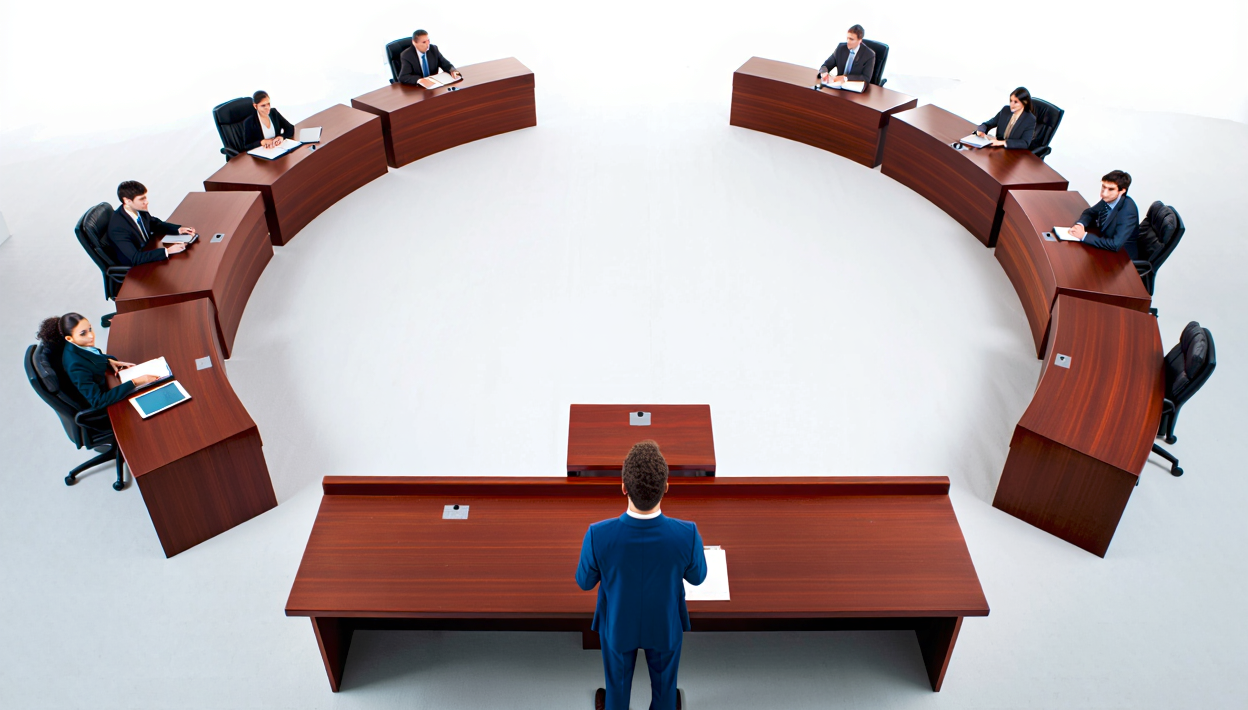
U-shape seating arranges tables in a horseshoe configuration, with attendees seated along the outer edges and the open end facing the presenter.
This layout is ideal for board meetings, panel discussions, or training sessions, as it ensures clear sightlines and encourages interaction among participants. It’s best for groups under 30, though a double-U can accommodate larger groups.
This setup requires a lot of floor space and some attendees may feel exposed.
It is best to use mobile microphones for discussion and place the main speakers in the center.
With the Seat addon for Modern Events Calendar lets you customize any floor plan and ensure proper arrangements.
It’s even more powerful when paired with 5 Steps to Create an Event Registration Form in WordPress to streamline the entire check-in process.
Cabaret Style (Half-Round Tables)
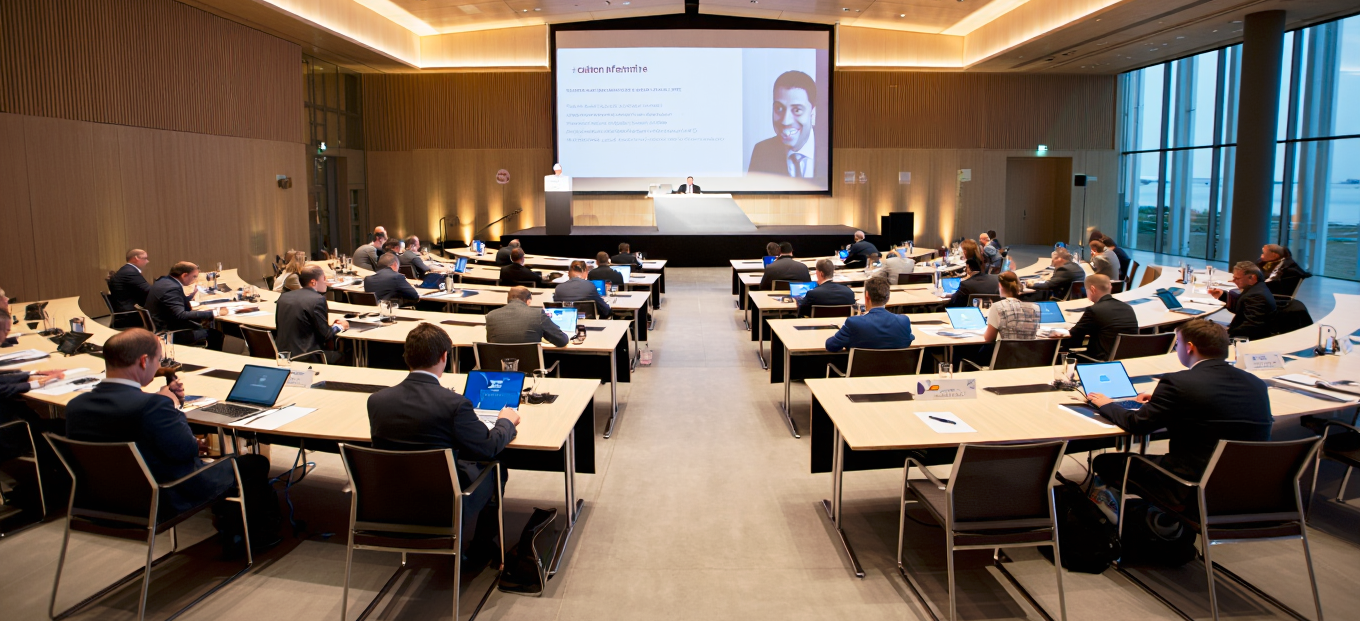
Cabaret style seating uses half-round tables, seating 4–5 people, arranged in a semi-circle facing the stage.
This setup balances focus on the presenter with peer interaction, making it ideal for hybrid events combining presentations and networking.
It fosters collaboration through mini-breakout spaces and pivoting chairs but reduces room capacity due to its space requirements.
To enhance engagement, assign specific activities or discussion topics to table groups.
Modern Events Calendar supports tiered ticketing, allowing you to offer different ticket prices based on seating style or proximity to the stage, enhancing the attendee experience.
[Pro-Level Strategy:] If your cabaret-style event leans on marketing to sell out seats, integrating targeted promotions helps. Consider these Top 5 Email Marketing Tools for Event Promotion to power up your ticketing efforts.
Lounge / Informal Seating
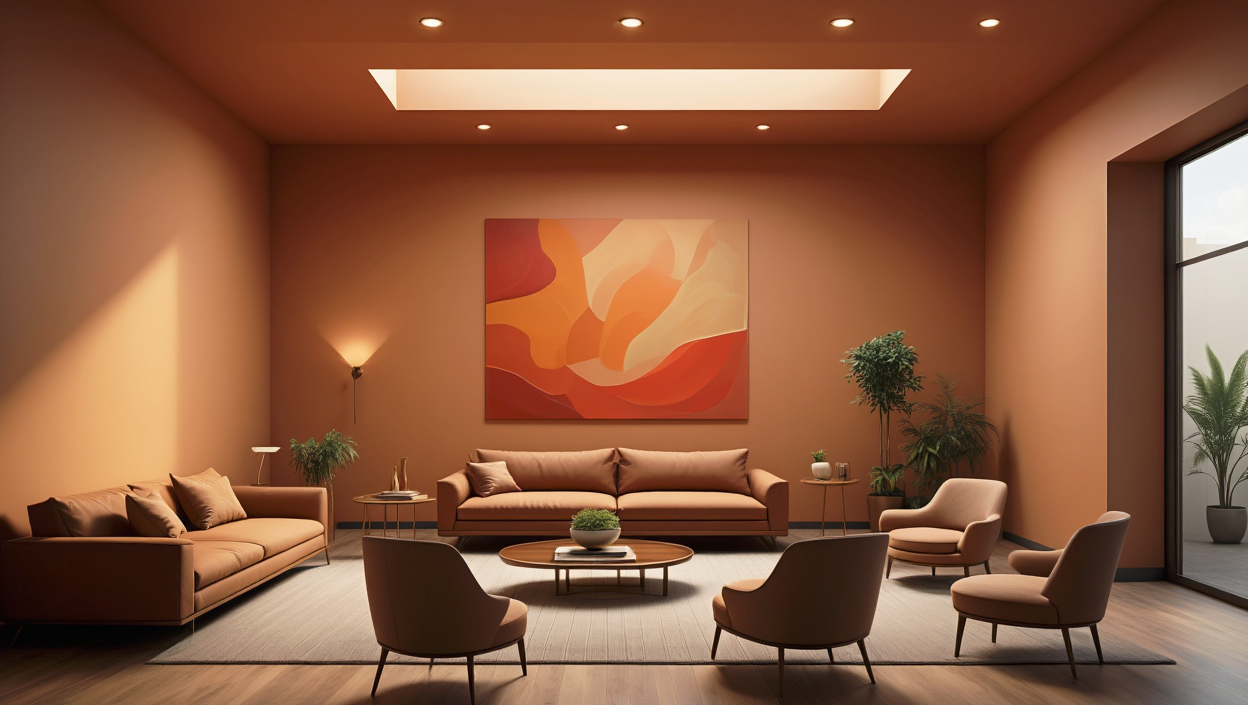
Lounge or informal seating uses sofas, coffee tables, and chairs arranged in clusters to create a relaxed, inviting atmosphere.
It’s perfect for creative workshops, innovation sessions, or VIP areas, encouraging networking and creativity.
This setup is ideal for entertainment events, gala nights, or charity events but may feel too unstructured for formal settings.
To maintain event flow, mix lounge pods with standing tables to offer varied interaction zones.
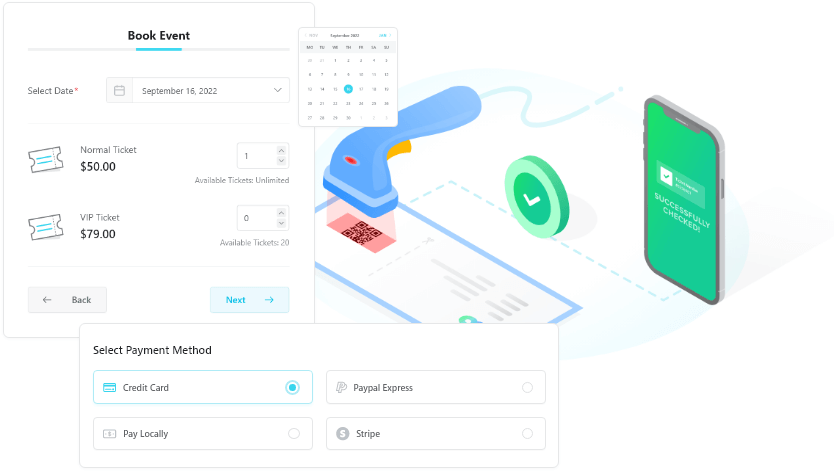
Modern Events Calendar and its Ticket and Invoice addon, enables you to create special access passes for VIP seating zones, ensuring premium attendees enjoy exclusive areas.
To create a smooth VIP experience with premium seating zones, pair your setup with strategies from Smart Event Ticket Pricing: Strategies That Sell to balance exclusivity and accessibility.
Bonus Tip: Match Layout to Event Goals & Audience Type
Choosing the right seating arrangement requires aligning the layout with your event’s goals and audience demographics.
For networking-focused events, round tables or lounge seating foster interaction, while theater or classroom styles suit presentations or lectures.
Consider attendee demographics—younger audiences may prefer informal, interactive setups, while older attendees might favor structured environments.
These preferences are underpinned by well-researched behavioral patterns—like loss aversion and social proof—that impact how attendees engage.
For a deeper dive, InEvent's article on psychology-driven event marketing reveals how cognitive biases can make or break attendee participation
Use feedback from past events to refine your approach, and don’t hesitate to combine layouts within one space. For example, you could use theater seating for a keynote and transition to round tables for networking sessions.
[Organizer’s Secret:] Matching layouts to your target audience can drastically improve attendance. Learn more in Proven Tips to Increase Event Attendance with Ease: Tips to Fill Your Seats.
A study from the UBC School of Business suggests circular setups enhance social bonding, while rectangular layouts appeal to competitive individuals.
How Modern Events Calendar Simplifies Seating and Ticketing
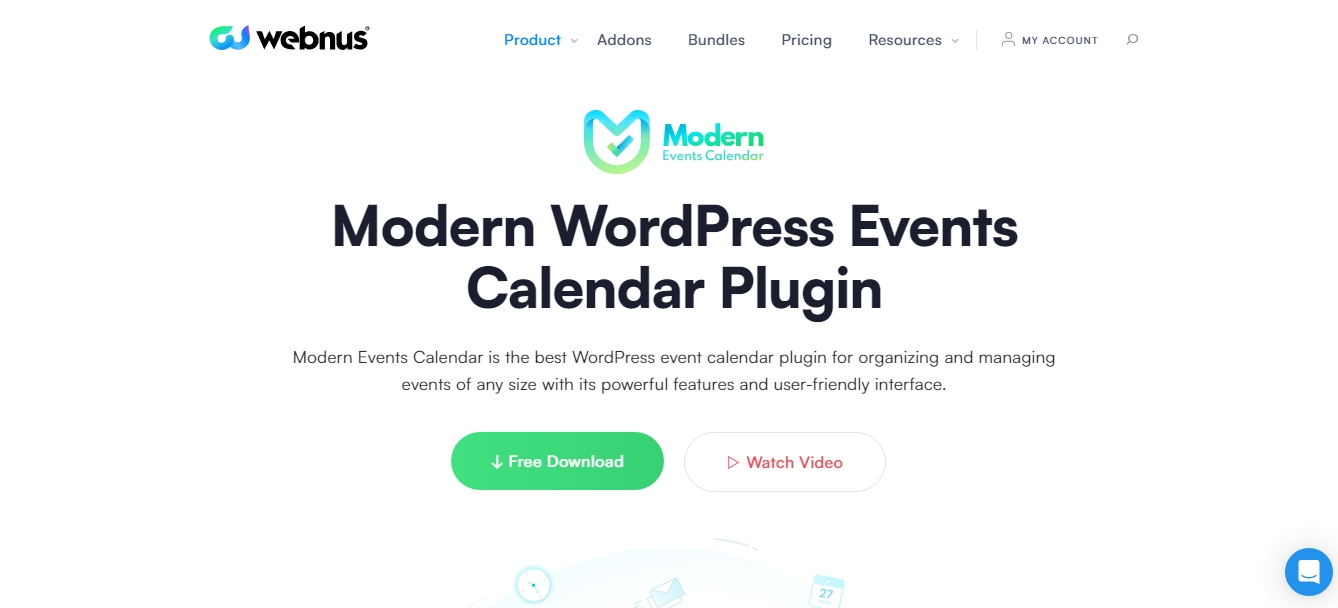
Modern Events Calendar (MEC) offers powerful tools to streamline seating and ticketing management. Its Seating addon allows you to:
These features support various event types, from conferences to galas, ensuring a seamless experience for organizers and attendees.
Download MEC to design interactive seating charts, assign tickets by zone, and streamline your event layout for better engagement and ROI.
Conclusion
The seating arrangement you choose can significantly impact your event’s success.
By understanding the strengths and weaknesses of theater, classroom, round tables, U-shape, cabaret, and lounge layouts, you can tailor your setup to your event’s goals and audience.
Tools like Modern Events Calendar make it easier to implement and manage these layouts, enhancing engagement and streamlining operations. Experiment with different arrangements and leverage attendee feedback to create memorable, interactive events.


